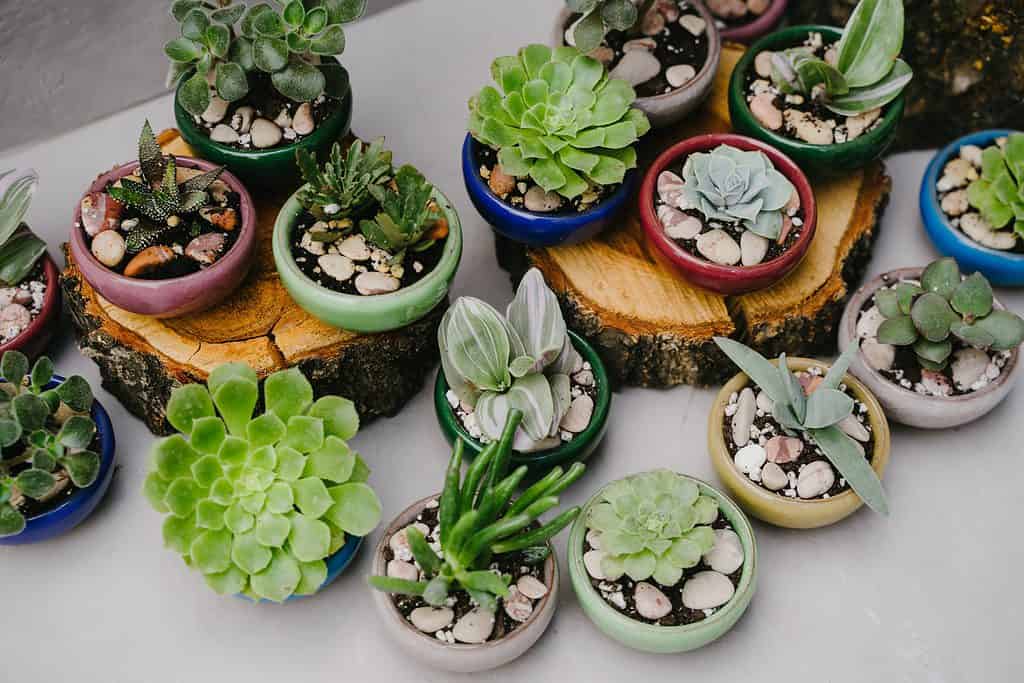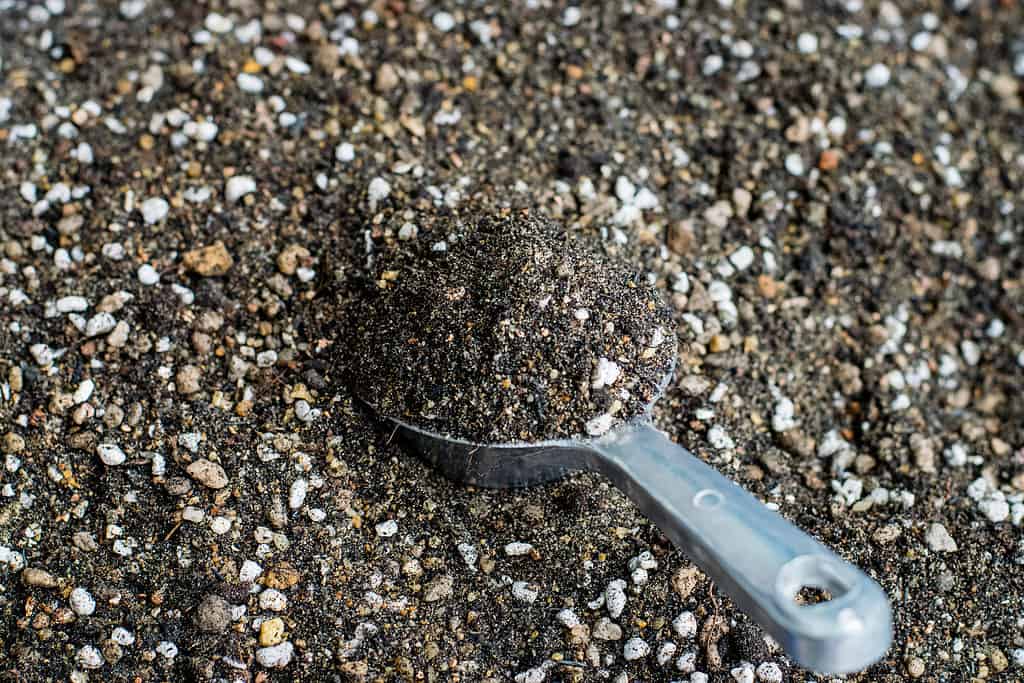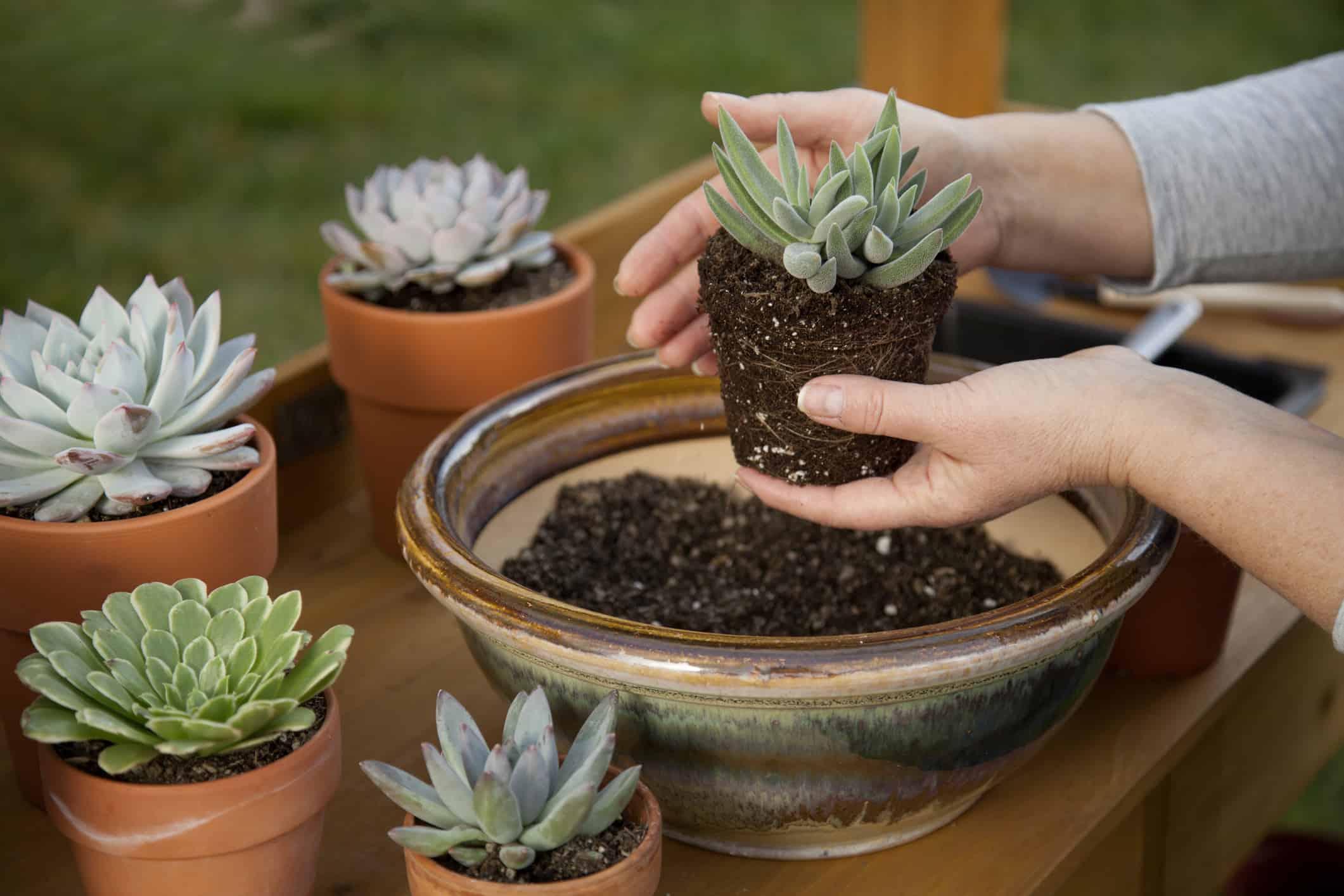Cacti and succulents are popular choices for indoor gardeners due to their versatility and low maintenance. Despite being easy to care for, choosing the right soil can make all the difference in how your cacti and succulents grow.
Here’s what you need to know about the differences between cactus and succulent soil to determine which is best for your plants.

Choosing the right soil can make all the difference in how your cacti and succulents grow.
©Alice Rodnova/Shutterstock.com
Cactus Soil vs. Succulent Soil: Key Differences
Cactus soil and succulent soil are similar but not the same. Both types of soil are known to be well-draining and support plants from warm climates, but there are key differences:
Texture
Cactus soil tends to be grittier and coarser than succulent soil, which is typically finer and more porous.
Composition
Cactus soil tends to have more inorganic materials and sediment, like perlite or sand. Succulent soil has a higher ratio of organic materials, like compost, coco coir (coconut fiber), and peat.
Water Retention
Cactus soil drains faster than succulent soil, protecting sensitive cactus roots. This feature isn’t ideal for most succulents, as the draining speed doesn’t allow significant time for absorption.
Cactus Soil vs. Succulent Soil: Are They Interchangeable?
Despite their similarities, cactus soil and succulent soil are not interchangeable. However, many brands of prepackaged soil use the terms interchangeably.
Both cacti and succulents require well-draining soil to prevent root rot. However, cacti are more susceptible to this issue than most succulents.
A cactus will typically survive in succulent soil, though it may not thrive — as long as the pot has suitable drainage holes. Similarly, succulents will likely survive but struggle in cactus soil as the water drains too quickly.
However, both options are better than basic potting soil for either cacti or succulents, which is too porous and unideal for their drought-tolerant nature.
What to Look for in Cactus Soil
Cactus soil should have a healthy blend of soil, sand, and large particulate matter for aeration. Cacti grow in desert environments and require soil that reflects their natural habitat.
Look for soil with a ratio of 3:3:2 of potting soil, coarse sand, and perlite, gravel, or pumice. Some avid gardeners like to work in one part of organic matter, such as mulch or coco coir.
Cacti need slightly acidic soil, ideally on the higher end of pH 5-7. The soil should also be sterilized to prevent bacterial or fungal growth. Always maintain a clean work area and wash your hands before mixing cactus soil.

Cactus soil should have a healthy blend of soil, sand, and large particulate matter for aeration.
©iStock.com/naramit
What to Look for in Succulent Soil
Succulent soil should also be well-draining, with a higher ratio of organic matter than cactus soil. While many succulents come from desert regions, some originate from semi-desert areas with higher amounts of rainfall.
Look for soil with a ratio of 2:2:1 of potting soil, sand, and particulate matter like perlite, gravel, or pumice. You can also add extra organic matter to this blend.
Succulents also lean toward more acidic soil, thriving in a pH of 4-6.5. The soil should also be sterile to protect the sensitive plant from bacteria and fungi. Maintain a clean work area, and always wash your hands before mixing your own soil blends.

Succulent soil should be well-draining with a higher ratio of organic matter than cactus soil.
©iStock.com/evgenyb
Can You Mix Cactus and Succulent Soil?
If you’re struggling to balance porosity and drainage, you can mix cactus and succulent soil. Aim for a 1:1 ratio when taking this approach.
It’s always best to research the specific needs of your plant type to ensure that you are providing the right growing conditions.
The photo featured at the top of this post is ©
Thank you for reading! Have some feedback for us? Contact the AZ Animals editorial team.






